7 MIN READ
Cover Crop Benefits, Species Selection, Guidelines, and More
December 1, 2025
Cover Crop Benefits and Challenges
Cover crops in agriculture offer many benefits including wind and water erosion reduction, nutrient retainment, and enhancement of soil organic matter (Figure 1). Along with the benefits of growing a cover crop, challenges include cover crop establishment in a current crop and timely termination if not winter killed.
In some agricultural areas, cover crop use is supported by state-funded programs to help increase water quality by reducing nutrient runoff and leaching during non-cropping months. According to the last Census of Agriculture taken in 2022, cover crop acreage increased about 17% from 2017 (~15.4 million acres) to 2022 (~17.9 million acres).1 The United States Department of Agriculture (USDA) Natural Resources Conservation Service (NCRS) in a partnership with the Farmers For Soil Health made of membership of the United Soybean Board, National Corn Growers Association, and the National Pork Board, has a goal of increasing cover crop acres to 30 million by 2030.2
What are the Benefits of Cover Crops?3
- Wind and water erosion reduction.
- Soil compaction mitigation.
- Improvement of water infiltration, soil aggregation, and soil water holding capacity.
- Improvement of nitrogen (N), phosphorus (P), potassium (K), and sulfur (S) utilization.
- Retainment of residual fertilizer in the field.
- Adding organic matter and nutrients to the soil.
- Removal of moisture from wet soils through transpiration.
- Food source for livestock and wildlife.
- Pollinator sustenance.
- Conversion of atmospheric nitrogen into plant-available forms.
- Breaking of pest cycles and nematode suppression.
- Weed suppression.
- Reduction of soil crusting.
What are the Challenges of Cover Crops?
- Reduced stand if seeded into a standing crop when the soil surface is wet, dry, or highly shaded.
- Reduced seed-to-soil contact in no-till seedings because crop residue may be pinched into the seed slot, or the seeds may be laying in crop residue instead of the seed slot.
- Issues of seeding cash crops into cover crops include:
- Cover crops can slow soil surface drying and residues of dead cover crops can trap excess soil moisture.
- Problems with seed slot closure.
- Difficulty cleaning cover crops out of the row at planting.
- Wrapping of cover crop residue on planter parts.
- Emergence of cash crop through cover crop residues.
- Cover crop termination timing can be challenging for non-winter killed species. This can be complicated by how the cover crop will be terminated, concerns over nutrient release (nitrogen tie up), concerns about soil moisture depletion by the cover crop prior to seeding the cash crop, and issues with termination during less-than-ideal weather conditions.
- Cover crop species selection may be limited by a previous herbicide application.
- After harvesting the primary crop, the cover crop seeding window may be too short for successful establishment prior to freezing temperatures.
- Early spring primary crop planting dates may require early cover crop termination, limiting cover crop function and utility.
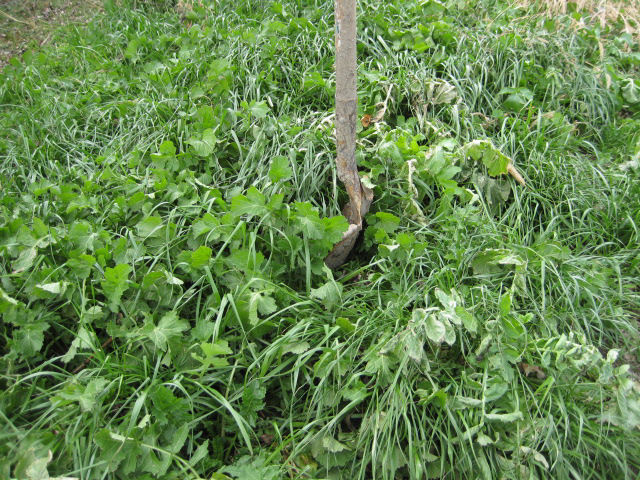
Cover Crop Species Selection
Cover crop species have different benefits; therefore, the desired end benefit of a cover crop should be determined prior to selecting which cover crop species to plant.
- Grass species are more likely to hold soil in place from wind and water erosion.
- Fast growing grasses or Brassica (cruciferous) species are a good choice to help retain nutrients and suppress weeds.
- Nitrogen-fixing legume cover crops (if properly inoculated with rhizobia bacteria) may help reduce the amount of nitrogen needed for the following cash crop.
- Cover crop fall or winter grasses, Brassica species, and legumes are best for animal feed through grazing or harvesting.
- Cover crops with penetrating root systems, like radish and deep-rooted annual ryegrass can help break up compacted soil (Table 1).
Table 1. Common cover crop characteristics and recommendations for Missouri (planting rates may differ for other areas of the country).*
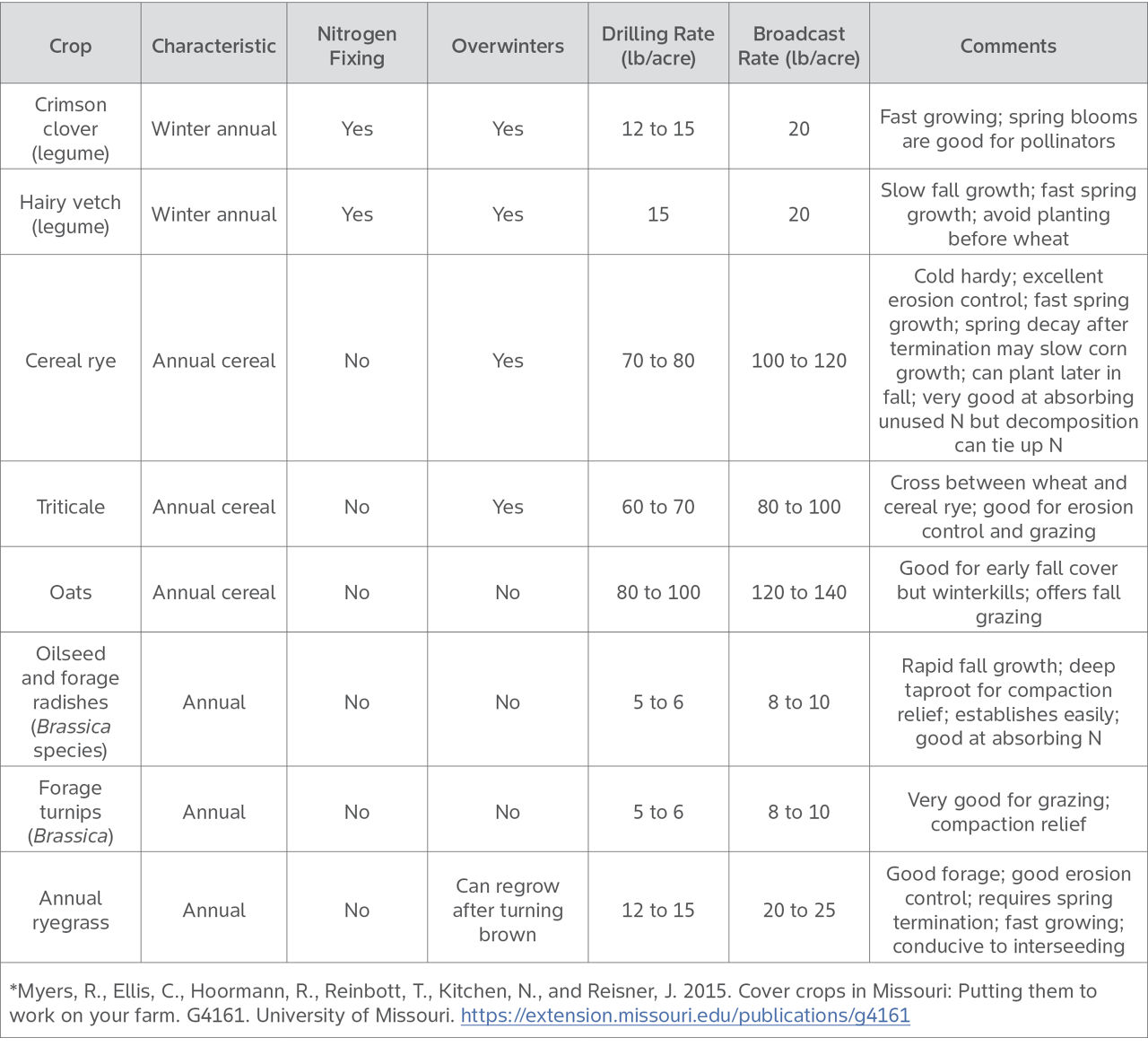
Table 2. Warm and cool season cover crops.*
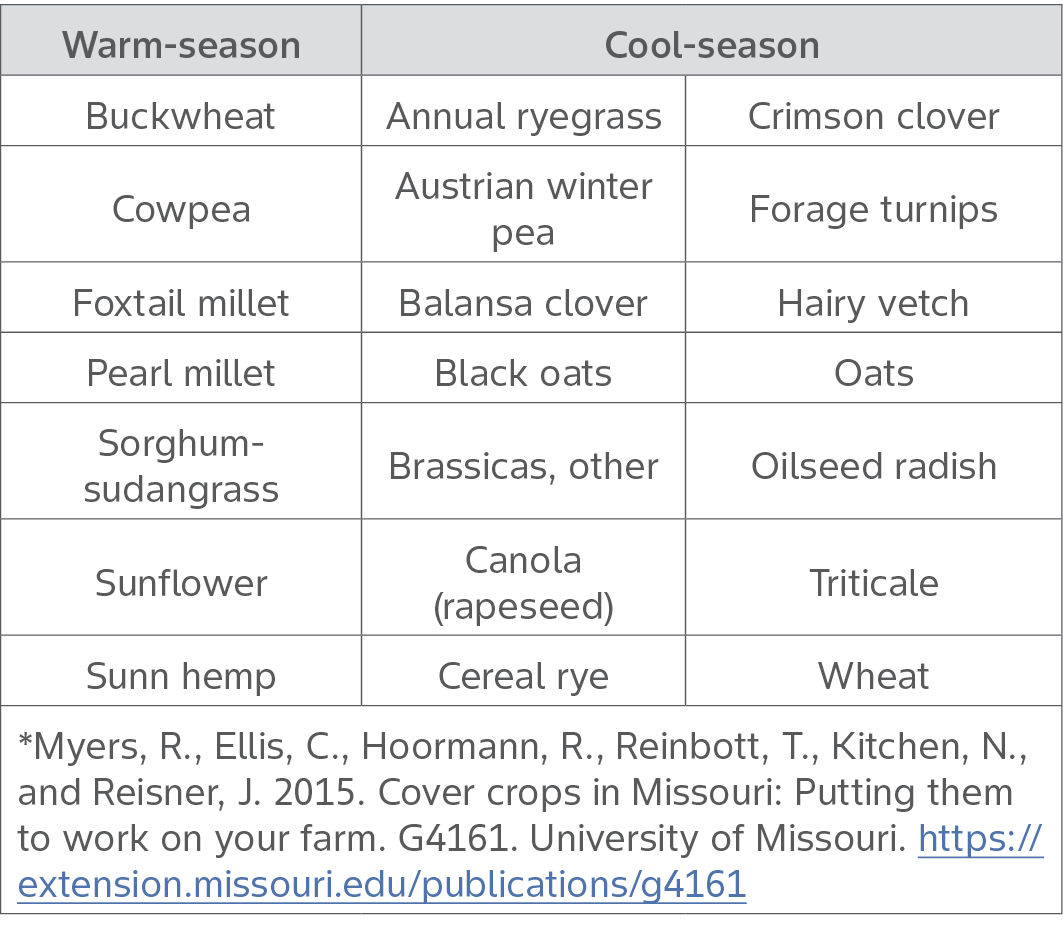
Cover Crop Seeding Rates and Seeding Methods
Cover crop seeding rates vary depending on the seeding method and if a cover crop species is planted as one crop or as a mix of two or more species. Seeding rates for aerial, slurry-seeded, and broadcast plantings should be 20% higher than row crop planter or drill seeding rates because seed-to-soil contact is lower in the first three methods, which generally results in lower germination success. Smaller-seeded species such as Brassicas, flax, and clovers are best suited for broadcast or aerial seeding, or may be planted using a grass seeder attachment with a small grain drill.4 Larger seeded species such as peas, cereal rye, barley, and sunflowers should be drilled or planted with a row crop planter.3 The mix ratio may vary based on the cover crop objective. A proportional rate for a two-way mix may be 55 to 60% of the normal rate of a species by itself. A three-way mix may be 35 to 40% of an individual species.3
Cover Crops Help Reduce Erosion and Enhance Soil Organic Matter
Cover crops increase the time in which a field is actively growing agricultural plants. This increases sunlight interception, which captures carbon through photosynthesis. Actively growing roots in the soil act as a carbon pump that helps feed soil microbes and the larger soil food web, which is the foundation of soil health. Cover crops can help fields rebound from intensive farming and tillage practices that have led to compaction, erosion, and soil structure damage. Some cover crops grown in the fall and spring have deep tap roots that can help reduce compaction, which helps the roots of a cash crop penetrate these layers by following old cover crop root channels.5
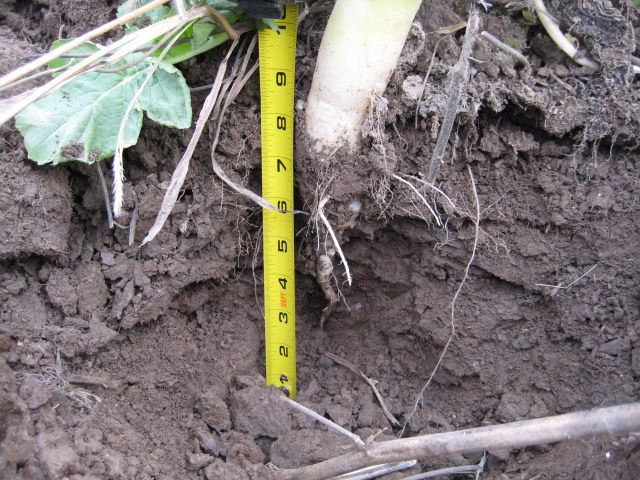
Reducing soil erosion depends on how much the cover crop reduces the forces of soil detachment and transport. Soils are more susceptible to erosion in fields without a crop canopy and crop residue. Aboveground biomass from cash crops may only last four months; however, cover crop growth extends the period of biomass production and can help build soil organic matter. Climate and vegetation are two of the most important factors influencing the amount of soil organic matter near the soil surface. Increasing soil organic matter creates larger, more stable soil aggregates near the soil surface which helps 1) reduce soil crusting and 2) decrease the potential for soil detachment and erosion.6
Soil structure, soil fertility, soil water holding capacity, and soil health are associated with soil organic matter, as are many physical and chemical characteristics of soils. No-till practices help preserve the soil organic matter gained from cover crop growth. Conversely, tillage breaks down soil organic matter as aeration of the soil through tillage results in a flush of aerobic bacteria that quickly consumes available soil organic matter. Research shows that soil organic matter can increase substantially within a short time with the use of cover crops in conjunction with a no-till system. Organic matter can help provide protection for the soil during periods of extreme drought conditions.6 Most soil test reports state soil organic matter (SOM) as the percent of total soil which contains about 95% of all soil nitrogen. About 30 pounds of nitrogen per acre can be released (mineralized to nitrate) during the cropping season from each 1% soil organic matter present.7 Agricultural topsoil has SOM levels that generally range from 1% to greater than 5%. Research has found that SOM can be increased by 8 to 114% by legume crops and 4 to 62% by non-legume crops.6
Additional soil fertility benefits of cover crop use include increased infiltration rates, nutrient cycling, and residue decomposition. Cover crops can reduce surface nutrient transport and loss by improving soil water infiltration and absorbing excess soil moisture. By keeping precipitation in fields, sediment detachment and transport can be reduced, which is important for the retention of soil phosphorus.3
Cover Crop Grazing or Harvesting
Establishing cover crops for livestock feed provides a dual advantage – conservation and economic return through meat, milk, and manure. Residual herbicide labels must be read and followed as grazing and hay harvest restrictions may apply.
Depending on the cover crop, grazing may occur in the fall, winter, or spring. For fall or early winter grazing, fast-growing species should be used such as oats, rye, or Brassica species. If spring grazing is desired, winter-hardy species such as winter rye, triticale, barley, or wheat are better options because rye and other overwintering species may not survive. Brassica species should not be grazed alone because of their ability to take up excess nitrogen that may result in bloating of ruminants. Grazing should include a mix of species to maintain rumen health. Cover crops harvested as hay may require species that can dry during the spring months (usually, Brassica species are not good for this). Ensiling can be used if the area or the crop is not conducive to dry hay production. Nitrate issues can be a problem with sorghum and sudangrass, especially if grazed or harvested after drought conditions. If the grass cover crop is to be harvested for feed it should be cut by boot stage for best forage quality and water preservation (water uptake increases during reproductive stages). Grazing helps keep some of the nutrients in the field while harvesting can remove nutrients but still provides some soil health benefits. Sweet clover should not be harvested for hay as it contains a substance called coumarin, which is converted to dicoumarol by mold in the hay. Dicoumarol poisoning can cause several health issues and ultimately death.8
Crop insurance programs should always be reviewed to determine any potential effect on insurance payments.
Cover Crop Weed Management
Cover crops can be used as a physical barrier to help suppress weeds after harvest and into early spring. Management decisions that can help a cover crop contribute to weed suppression include:
- Cover crop planting and termination dates can impact weed suppression. Often, cover crop termination should be delayed to help maximize weed suppression; however, this can delay corn and soybean planting dates beyond the typical planting dates for the area.
- When a mixture of cover crop species is planted, the cover crop species that produces the most biomass is often the most important for weed suppression. Cereal rye can often produce enough biomass for weed suppression.
- Increasing the cover crop seeding rate can be an important consideration, especially when the cover crop planting date is delayed. It is less of a concern when cereal rye is the primary cover crop as its tillering ability can help compensate for a late planting date. However, very late planting dates or an early winter can reduce tillering and shorten the growing season.
- Several cover crop species, including cereal rye, produce compounds (allelochemicals) that can suppress small-seeded weeds growing in the cover crop residue. While the effect of these compounds is known, it is difficult to determine how important this effect is compared to the importance of cover crop biomass.
- If the cover crop is grazed, the timing and intensity of the grazing can have a large effect on biomass and termination date. Cover crops that winterkill or are terminated with herbicides in the spring can still provide a mat that prevents weeds from germinating.
- Summer annual weed suppression is dependent on the growth stage of the cover crop at termination. More mature cover crops can provide a longer duration of weed control. Following termination, cover crop residue dissipates over time. When cereal rye is terminated before stem elongation, the plant residues degrade quickly and weed suppression is short-lived.9,10
Cover Crop Termination with Herbicides and Tillage
Terminating cover crops prior to planting in the spring can be challenging (Figure 3). Cover crop termination is influenced by the species used (grasses, Brassica species, cereals, broadleaves) their growth stage, temperature, and the crop to be planted. Methods used to terminate cover crops include winterkill, tilling, crimping, mowing, and herbicides. All these termination methods have advantages and disadvantages but, in many situations, an herbicide application may still be necessary.
Location can limit or be advantageous for the winterkill of cover crops. When a termination method other than winterkill is used, there are termination date guidelines set by the Natural Resources Conservation Service (NRCS) to help assure a grower, who wants to insure their crop, follows good farming practices. Cover crop termination guidelines can be determined by the location of each US county. This termination date can range from 35 days or earlier before planting of the crop to before crop emergence.11 Termination can be accomplished with tillage, but some of the benefits provided by the cover crop may be reduced.12 Roller-crimpers can be used to flatten tall-growing cover crops by breaking or crimping the stem. Mowing can be an effective termination method for some species, but care is needed to evenly distribute the residue.13
When selecting herbicides to terminate the cover crop, consideration should be given to the cover crop species, weed species present, the weed growth stage, weather conditions at application, the nature of herbicide activity (systemic or contact), and the cash crop to be planted. Actively growing crops under warm temperatures have higher metabolism rates that move systemic herbicides to their site of action more quickly. When glyphosate is used to terminate a cover crop, the crop must be actively growing and, ideally, the application should be made after several sunny days with daytime temperatures above 55 °F.14
When using herbicides, the product label must be read and followed for application guidelines and re-cropping restrictions concerning the following crop.
To maintain farm program eligibility for federal crop insurance on spring planted crops and other programs, check with your local Farm Service Agency (FSA) to make sure termination dates follow NRCS guidelines. The NRCS Cover Crop Termination Guidelines were jointly developed by NRCS, FSA, and Risk Management Agency (RMA) to promote a consistent, simple, and flexible policy across all USDA programs.11
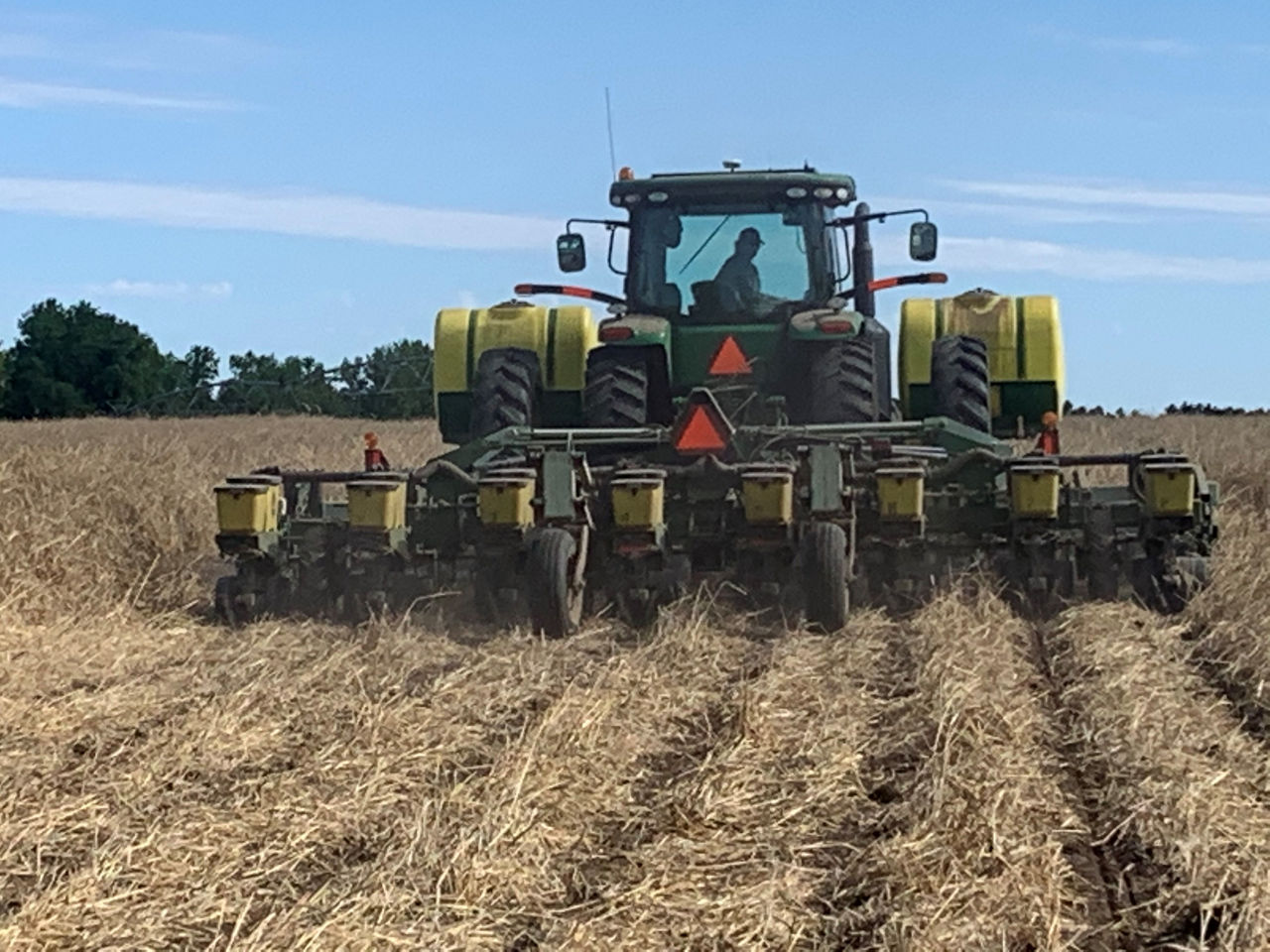
Cover Crop Summary
When considering using a cover crop for the first time, it is important to understand that there is no one-size-fits-all cover crop answer for all situations or production areas. A grower is often encouraged to start small and then apply what is learned the first few years along with learning what other successful cover crop growers are doing in the area. This allows adjustments to the program to meet the needs and the desired soil health improvements that are important to each unique situation.
Sources
12022 Census of Agriculture. United States Summary and State Data. Volume 1. Geographic Area Series. Part 51. AC-22-A-51. United States Department of Agriculture. https://www.nass.usda.gov/Publications/AgCensus/2022/Full_Report/Volume_1,_Chapter_1_US/usv1.pdf
22022. USDA offers expanded conservation program opportunities to support climate smart agriculture in 2022. Press Release. United States Department of Agriculture. https://www.usda.gov/about-usda/news/press-releases/2022/01/10/usda-offers-expanded-conservation-program-opportunities-support-climate-smart-agriculture-2022
3Myers, R., Ellis, C., Hoormann, R., Reinbott, T., Kitchen, N., and Reisner, J. 2015. Cover crops in Missouri: Putting them to work on your farm. G4161. University of Missouri. https://extension.missouri.edu/publications/g4161
4McGhee, N. and Barrett, R. 2018. Using a grain drill with small seed attachment to increase planting accuracy of cover crop mixtures. USDA-Natural Resources Conservation Service, GA Plant Materials No. 23. https://www.nrcs.usda.gov/plantmaterials/gapmctn13432.pdf
52018. Cover crops and carbon sequestration. Cover Crop Facts. Cover Crop Resource Series. Sustainable Agriculture Research & Education (SARE). https://www.sare.org/wp-content/uploads/Carbon-Sequestration-Fact-Sheet-.pdf
62017. Cover crops at work: increasing soil organic matter. Cover Crop Facts. Cover Crop Resource Series. Sustainable Agriculture Research & Education (SARE). https://www.sare.org/wp-content/uploads/Cover-Crops-at-Work-Increasing-Soil-Organic-Matter.pdf
7Self, J.R. 2010. Soil test explanation. Colorado State University Extension. Fact Sheet No. 0.502. https://www.extension.colostate.edu/docs/pubs/crops/00502.pdf
8Brackenrich, J., Duiker, S.W., and Hartman, D. 2023. Integrating grazing into cropping systems: Cover crop species and crop rotations. Pennsylvania State University Extension. https://extension.psu.edu/integrating-grazing-into-cropping-systems-cover-crop-species-and-crop-rotations
9Hartzler, B. and Anderson, M. 2019. Impact of cover crops on weed management. Iowa State University Extension and Outreach. The Standard. https://www.waukonstandard.com/articles/2019/04/10/impact-cover-crops-weed-management
10Nord, E.A., Smith, R.G., Curran, W.S., and Ryan, M.R. 2010. Suppressing weeds using cover crops in Pennsylvania. Pennsylvania State University. Agroecology in Practice.https://www.researchgate.net/publication/302968546_Suppressing_weeds_using_cover_crops_in_Pennsylvania
112019. NCRS Cover crop termination guidelines. Version 4. Cover Crops. USDA. Risk Management Agency. United States Department of Agriculture. https://www.nrcs.usda.gov/sites/default/files/2023-03/cover-crops-termination-guidelines-designed-v4-2019-updated.pdf
12Johnson, J. 2013. Termination time for cover crops. WallacesFarmer. FarmProgress. https://www.farmprogress.com/cattle-news/termination-time-for-cover-crops
13Stahl, L. and Sackett Eberhart, J. 2018. Spring management of cover crops. University of Minnesota Extension. https://extension.umn.edu/cover-crops/spring-management-cover-crops#mechanical-termination-765511
14Lingenfelter, D. 2025. Termination options for cover crops and winter cereal forages. PennState Extension. College of Agricultural Sciences. The Pennsylvania State University. https://extension.psu.edu/termination-options-for-cover-crops-and-winter-cereal-forages
Other Resources
Cover crops and crop insurance. 2018. A Risk Management Agency Fact Sheet. United States Department of Agriculture (USDA). https://www.fsa.usda.gov/sites/default/files/documents/Cover_Crop_Fact_Sheet.pdf
Cover Crops. University of Minnesota Extension. https://extension.umn.edu/soil-and-water/cover-crops
Web sites verified 9/23/25. 1223_53601